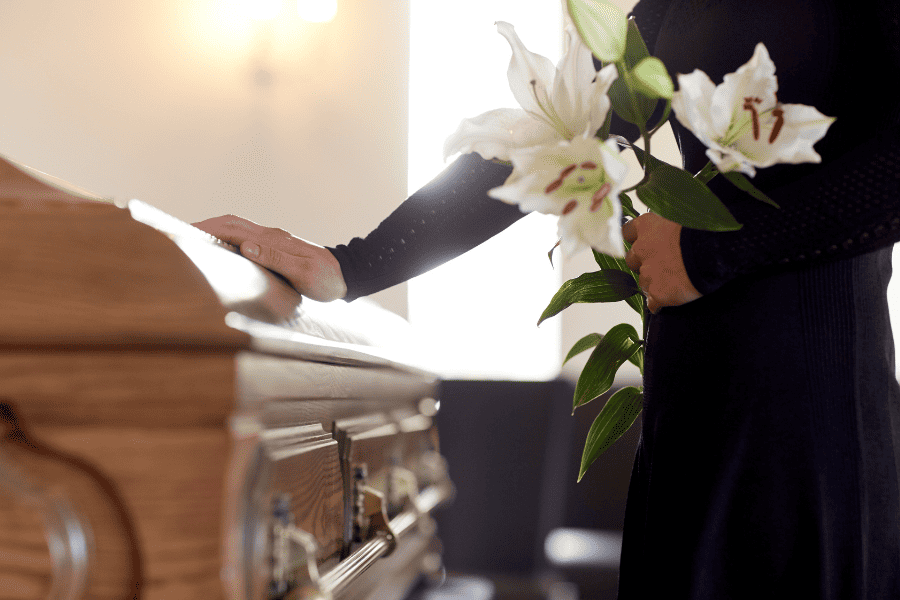Family and friends must deal with many difficult decisions following the death of a loved one. One of the many benefits of estate planning is that you can help those closest to you by clarifying your wishes for many of these difficult decisions. This is especially true for an issue where many families struggle: someone’s place of final disposition.
The disposition of remains refers to how a body is handled after death. This process often refers to traditional funeral options, such as burial or cremation. However, you are not limited to just those options when it comes to body disposition.
Legal Guidance on Body Disposition Decisions
For family members and friends, dealing with the death of a loved one is an emotional and stressful time. During times of stress, people often act impulsively. This is one explanation for disputes between family members that may occur during this emotional timeframe, where minor disagreements can become significant arguments.
The decision over what to do regarding funeral arrangements and the disposition method can be particularly contentious. These disagreements typically play out in private. However, there have been some very public clashes. For example, the body of musician and singer James Brown was moved 14 times due to family disputes.
Thinking about your funeral and place of disposition is not exactly a fun topic. However, it is much better for you to spend some time on the issue than to place this burden on your family and increase the possibility of familial disputes.
By working with an estate attorney, you can create a disposition of remains document where you designate someone to carry out your wishes regarding your disposition method. Even if a family member objects to your decision, Washington state law is written to empower an individual’s choices.
As the Revised Code of Washington (RCW) 68.50.160 states, “A person has the right to control the disposition of his or her own remains without the pre-death or post-death consent of another person. A valid written document expressing the decedent’s wishes regarding the place or method of disposition of his or her remains, signed by the decedent in the presence of a witness, is sufficient legal authorization for the procedures to be accomplished.”
That same code states that if someone does not create a disposition of remains document, there is an order for who determines the type of disposition:
- If the decedent died while serving in military service, the person designated on the decedent’s United States Department of Defense emergency data record.
- An agent named on a written document signed and dated in the presence of a witness.
- The surviving spouse or state-registered domestic partner.
- Adult children (if there is a disagreement, the majority decides).
- Parents.
- Siblings (again, if needed, majority rule).
- Court-appointed guardian.
Type of disposition
Residents of Washington state have many disposition options.
Burial
Burial is one of the most common body disposition options. Typically, burial means placing the deceased in the ground and covering them with soil. The body is usually placed in a casket or coffin, although sometimes it is simply wrapped in a shroud. When a body is interred in a mausoleum, that is also considered a burial.
Typically, a body is embalmed before a funeral to help preserve it and give it a “lively” appearance for viewing. However, an environmentally friendly form of burial is becoming popular in Washington state, known as a green burial. Green burials only occur at specialized locations known as natural burial grounds.
To be considered a green burial, the following conditions are necessary (although your specific area may have different regulations):
- The body cannot be embalmed.
- The body is interred in a biodegradable coffin or shroud.
- Sites are memorialized with trees or shrubs instead of headstones or other grave markers.
According to Washington state code RCW 68.50.130, it is illegal (a misdemeanor) to bury a body anywhere other than a “cemetery or a building dedicated exclusively for religious purposes.” However, if you or a loved one wishes for a different place of final disposition, the following options are available.
Cremation
Cremation is another popular body disposition option. In this process, a body is reduced to cremated remains, commonly referred to as ashes, and typically stored in a specialized container called an urn.
The most known cremation procedure is flame cremation. During this process, a body is exposed to extremely high heat that burns away organic matter and leaves behind bone, which is processed into a powder.
There is a newer cremation process that uses less fuel and has a lower carbon footprint than flame cremation (according to the Chemical & Engineering News, one flame cremation emits approximately 418 pounds of carbon dioxide into the air, the equivalent of driving 470 miles in a car) known as alkaline hydrolysis. Alkaline hydrolysis actually goes by many names, including water cremation, flameless cremation, green cremation, chemical cremation, liquid cremation, and aquamation (cool name, but it also sounds like a children’s water aerobics class offered at the local YMCA).
Instead of flames, alkaline hydrolysis uses a combination of water, alkali (a chemical also known as potassium hydroxide), heat, and pressure to rapidly increase decomposition. The process takes a few days, and like flame cremation, the remaining bones are processed into a powder.
Unlike burial, there are several options for the disposition of cremated remains. As stated in RCW 68.50.130, “Disposition of human remains following cremation, alkaline hydrolysis, or natural organic reduction may also occur on private property, with the consent of the property owner; and on public or government lands or waters with the approval of the government agency that has either jurisdiction or control, or both, of the lands or waters.”
Options for the disposition of ashes in Washington state include:
- Personal property—You are legally authorized to scatter ashes on any property you own. However, if you wish to scatter ashes on private property other than your own, you need the owner’s permission.
- Scattering gardens—Several churches, cemeteries, and memorial parks have areas exclusively reserved for people who wish to scatter ashes.
- Public lands—Washington has many picturesque and varied natural landscapes, including beaches, forests, and mountains. You do not need a permit or permission to scatter ashes on public lands.
- Federal land—Before scattering ashes on land you believe to be public, be sure to check that it is not a national park or other federally owned land. While it is legal to scatter ashes in (most of) these areas, you need to obtain permission or a permit, and there may be limitations on where you can perform the activity.
- Pacific Ocean—You can obtain a general permit from the EPA to scatter ashes in the ocean. However, you must perform the act further than three nautical miles from the shore, the remains must be human (i.e., no pets), and all scattered items must be able to decompose (no fake flowers, metal monuments, headstones, etc.).
- Waterways—Washington state has many beautiful and scenic waterways, including lakes, rivers, and Puget Sound. Unsurprisingly, many people would desire their final resting place to be among these waves. Fortunately, the Washington State Department of Resources can grant permission for ashes to be scattered in these areas.
- The air—Yes, it is legal to scatter ashes from an airplane (well, it’s probably more accurate to say it is not illegal since no laws exist to prevent the act). However, whoever is doing the scattering must have a firm grip because it is absolutely illegal to drop a potentially harmful object (such as an urn) from the sky.
Composting
In 2019, Washington became the first state to legalize human composting (it has since been joined by California, Colorado, Nevada, New York, Oregon, and Vermont as of 2023). For this procedure, a body is placed in a reusable container with other biodegradable materials that accelerate decomposition. The entire process takes between two to three months. The result is a nutrient-rich soil that family members can keep or use to nurture a memorial tree or facilitate a nature conservation project.
Willed body programs
It is also possible to donate your body to a university to improve the education of our future health care providers. Washington state residents have two options: the University of Washington willed body program and the Washington State University willed body program.
To become part of a willed body program, an interested party must fill out a registration form (found at one of the links above). Once that person passes away, the selected program needs to be immediately notified. As long as the body is located in Washington state, the university will cover the cost of transportation. Once the body has fulfilled its educational purposes, the university will pay for cremation and either return the ashes to your family or bury them.
If you have further questions about the disposition of remains or any other estate planning issues, such as how to avoid probate, please reach out to Harbor Law Firm. We make the estate planning process as simple and stress-free as possible.
Our services include the following:
- Knowledgeable guidance customized to your specific circumstances and goals.
- A fully remote process that never requires you to leave home.
- Hours to fit your schedule.
- An adaptable process for exchanging documents and collaborating.
- Flat-rate pricing, so you’ll never be surprised by a legal bill.
We also offer a free consultation and can speak with you outside regular business hours. For more on our remote estate planning process, visit this page.
Our proven process defines precisely what you can expect, and our focus is always on your goals. Please fill out this form to schedule your free consultation.

